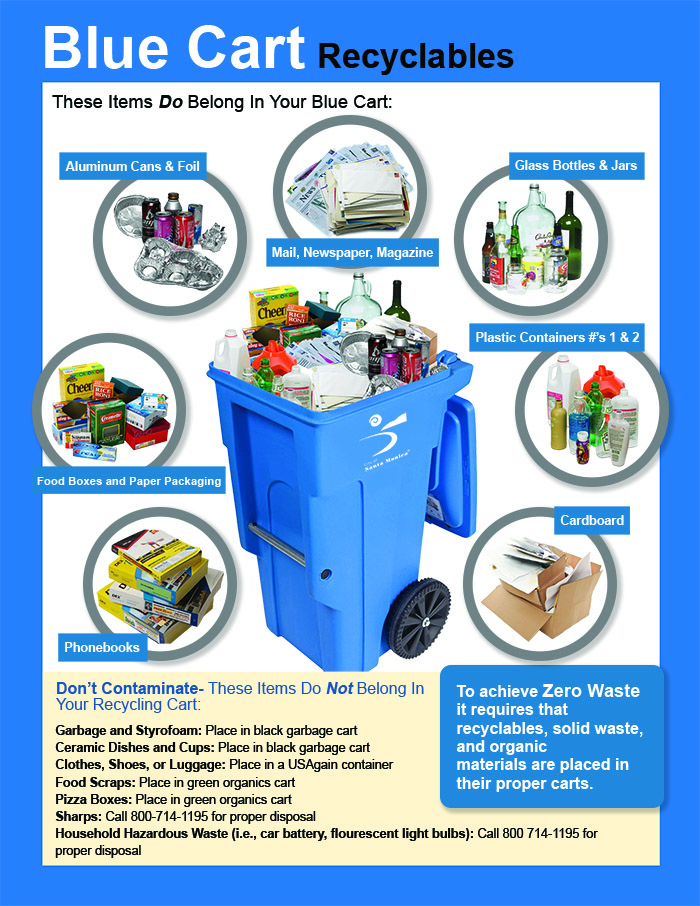Recycling woes make path to zero waste harder
August 22, 2019 11:44 AM
by Rick Cole

Many community members were surprised by the news that Santa Monica’s only recycling buy-back center announced that it would close on July 1. How could a city as committed to environmental sustainability lose such a long-standing community resource?
Recent news that California’s largest chain of recycling centers is abruptly shutting down more than 300 redemption centers puts the Santa Monica situation in perspective. As the Los Angeles Times editorialized last month, the Santa Monica closure seemed “shocking for a city that has been at the forefront of trash-reduction efforts. But given the collapse in the market for recycled paper and plastic, it was an understandable decision.”
What’s gone wrong? It now appears that leading cities like Santa Monica that were optimistic about achieving “Zero Waste” were misled by an inconvenient truth: a lot of “recyclable” material was never actually being recycled.
There are two basic reasons for this. First, the cost of recycling some plastics is currently greater than the value of the recycled material produced. In other words, cheap oil means it is still more cost-effective to create plastic out of new petrochemicals than to reclaim the old. Result? Mountains of plastics shipped to faraway places like China and the Philippines were ending up in their landfills or incinerators. The second, compounding problem was widespread contamination of even recyclable material like newsprint and cardboard. American consumers like to think even grease-soaked pizza boxes are recyclable and toss them into blue bins.
These flaws caused China to abruptly shut down its market for taking trash from other countries, including the U.S. Other Asian nations have followed with similar actions, culminating in the Philippines forcing Canada to take back 100 shipping containers of household waste that had set untouched in the Philippines for more than five years.The Times makes a good point – we need tougher laws to discourage use of single-use plastics. We also need investments in new materials and recycling technologies. We need better education as well for well-intentioned consumers to put the right materials in the right bin to avoid contamination. And we need temporary fixes in the meantime while we are working on these longer-term solutions.
The result is another national crisis that we had hoped was on the way to being avoided. Figures for 2017 indicate Californians generated about 77.2 million tons of waste, with 44.4 million tons going to landfills. According to the California Public Interest Research Group, since 2012, disposal per resident has increased from 5.3 to 6 pounds while the recycling rate has decreased from 50 percent to the current 44 percent. Although California’s recycling rate remains above the national average of 34.7 percent, results are well below the state’s 2020 goal of 75 percent.
While Santa Monica’s figures are significantly higher, we are also well short of our 95% goal of reducing or recycling waste by 2030. More troubling is that our recycling figures now appear inflated because of the failures of the recycling market.
Our long-term contract with the company that processed the recycled material from our trash trucks came up for renewal this year (they also operated the buy-back center). Where previously the company was paying our City to access the material, the new deal would have required us to pay them nearly one million dollars a year. The majority of the City Council balked at entering into a long-term contract at that price – especially during this period of turmoil in the recycling market. So we are now on a short-term contract with two other firms (one to haul it off-site and the other to sort and sell it into the recycling market) until we can develop a longer-term solution.
That’s what we’re working on now. As with other complicated challenges like homelessness or congestion, there are no simple answers. The Times makes a good point – we need tougher laws to discourage use of single-use plastics. We also need investments in new materials and recycling technologies. We need better education as well for well-intentioned consumers to put the right materials in the right bin to avoid contamination. And we need temporary fixes in the meantime while we are working on these longer-term solutions.
Santa Monica can still get to our Zero Waste goal of reducing or recycling 95 percent of our current level of trash, although it will be harder and more costly than we thought. But Santa Monica can’t do it alone. Confronting the metastasizing international crisis that is choking our oceans with plastics and overflowing our landfills with waste will mean thinking globally and acting locally. The example we set can be a model for other communities for a more sustainable future for all.
Want to know more about what materials you can and cannot recycle? Review the infographic below and click here for more information from Public Works.
Authored By
Rick Cole
City Manager
